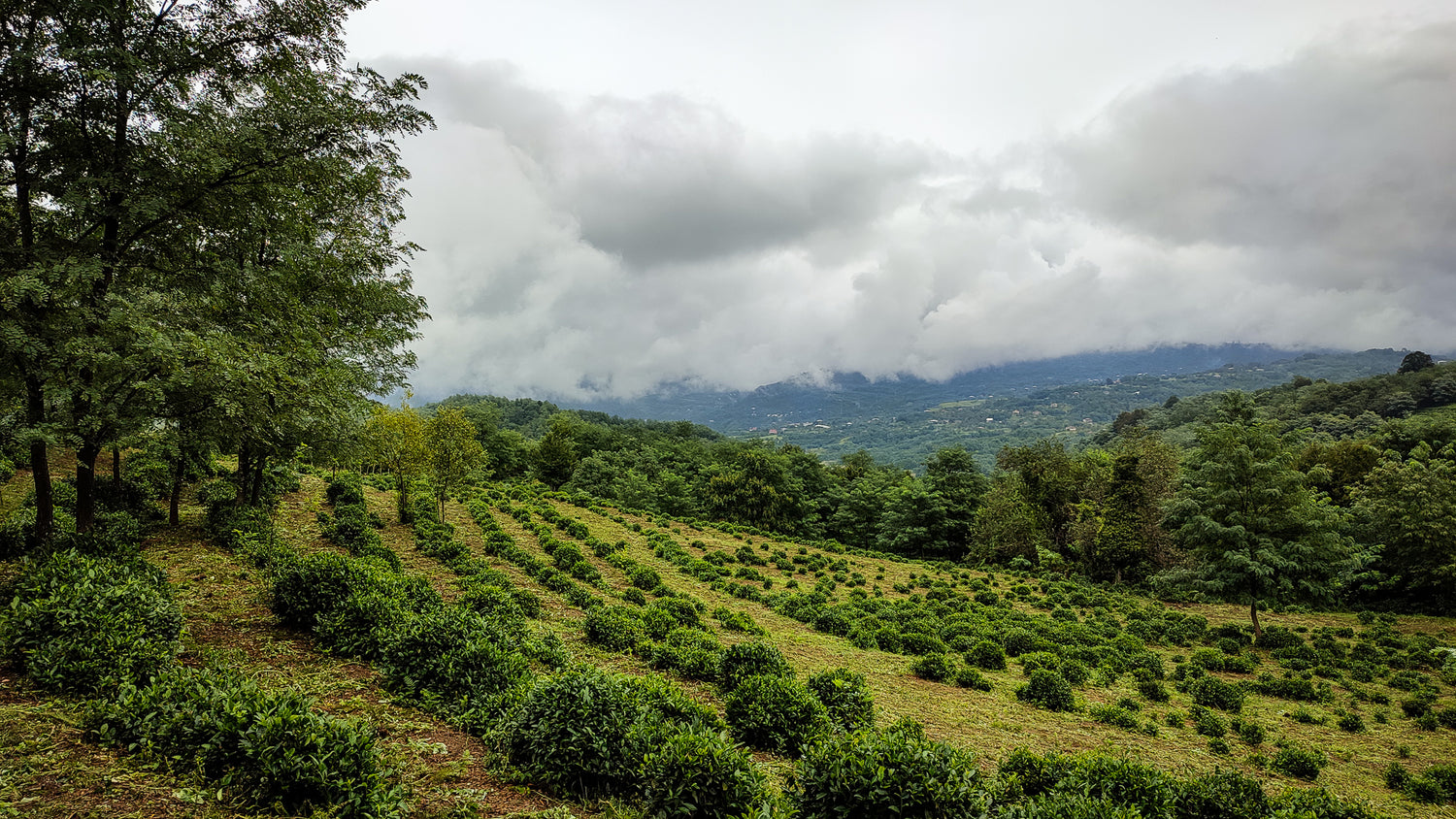

Georgian tea is often overlooked, yet Georgia is actually one of the most suitable places on Earth to grow high-quality, organic tea. This small country went from being the world's fourth largest tea producer to virtually unheard of in the space of three decades.
We took on three abandoned tea plantations here in 2018, so we've learned a few things about Georgian tea in the meantime. The past and present of the industry is both beautiful and hard, but what exactly is Georgian tea like and why have you probably never heard of it before?
Georgia's tea fields are spread throughout subtropical western Georgia. The winters here are cold, which naturally kills off pests and potential diseases, so tea bushes can thrive organically. In most tea growing regions, tea is treated with harmful chemicals to keep the tea bushes healthy and pests away. In Georgia, the cold and snow do that for us. We can't speak for everyone, of course, but we have practiced the organic ways of farming and supporting the biodiversity in our plantations from the very beginning. Today, our tea fields are also officially certified.
During the Soviet Union, Georgian tea was mass-produced and low quality, which can still often be the case. However, it has huge potential. When made with craftsmanship, Georgian tea has a complex, unique flavour that is slightly sweet. Its flavour comes from its terroir and climate (the cold winters help).

The tea bushes on our farm and across Georgia were grown from seed around 50 years ago so the bushes are strong and mature which helps them withstand the winters. Because of the cold, the tea season lasts 7 months of the year, which gives the bushes time to rest and gather strength, enhancing the naturally sweet flavour of the leaf, especially in spring.
<< Photo of the tea bushes on our farm covered in snow
Probably because you didn't live in the Soviet Union. Georgian tea actually has a centuries-long history, and just 30 years ago, it was one of the biggest tea industries in the world. But, almost all of the tea was very low-quality and mass produced for the countries in the Soviet Union.
When the Soviet Union collapsed, the Georgian tea industry went down with it. The thousands of tonnes of low-quality tea couldn't survive the free market, civil war and economic decline. Factories closed, tea machines were stolen and sold for scrap metal and weeds and brambles grew over thousands of hectares of tea bushes.
Within 5 years, Georgia's production collapsed to less than 10% of the previous volumes. This sorry state of affairs has lasted for the past 25 years.
Read more about the collapse of Georgian tea industry from here.
Photo below shows the ruins of a tea factory in Opurchkheti, just a few kilometres of our factory.
Sadly, many of the tea fields still lie abandoned or are ripped up and replaced with hazlenut trees, which is considered a more valuable crop. However, a small community of tea makers across Western Georgia are reviving tea fields and making artisinal tea here.
Tea farming in Georgia is no easy mission. We have spent countless hours rehabilitating the abandoned tea fields, clearing weeds and helping the tea bushes get back to life. However, Georgian tea has a long road ahead to become well-known for what it is – organic, high-quality tea grown on the edge of Europe.
We want to help put Georgian tea back to the world map, so more abandoned tea fields would get a new lease on life and to help to bring jobs back to the rural regions. So far, we've built a community of more than 2000 families around the world who drink Georgian tea from our farm. And counting...